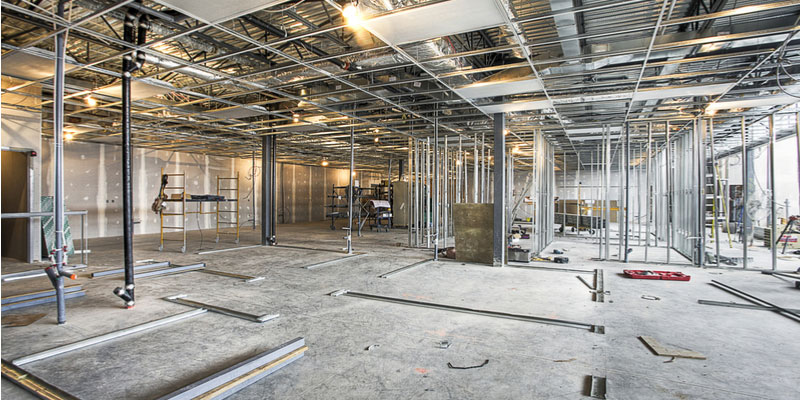When potential tenants search for commercial space to lease, typically they don’t find a perfect fit. Most spaces will require a build-out (also known as a tenant finish-out) to meet the tenant’s needs. This can mean demolishing walls, constructing new walls, new carpet, paint, cabinetry, etc. Many companies are overwhelmed by the thought of financing a build-out, not realizing it is a negotiable part of the lease agreement. Often landlords will perform the build-out, provided the tenant can meet terms and conditions and has solid financials.
Defining a Build-out
A build-out is construction performed on the commercial space, either by the landlord’s contractor or the tenant’s contractor, that may include lighting, plumbing, HVAC systems, painting, flooring, bathrooms, sinks, kitchens, walls, etc. Whether the tenant or landlord covers the cost is negotiated in the lease agreement. Typically, the landlord pays for the build-out unless high-end finishes are required, at which point the tenant kicks in additional payment. There is often a project manager involved who acts as go-between for tenant, landlord, and contractor to see that the project is carried to successful completion.
There are two types of build-outs. The first is the tenant improvement build-out. In this scenario, the tenant controls the build-out using his or her architect, contractor, etc. In a tenant improvement agreement, a tenant improvement allowance is agreed on during negotiation of the lease and is often based on the lease term as well as the tenant’s financials. When negotiating a tenant improvement budget, the tenant should get bids to ensure the budget amount agreed upon will cover the improvements needed. If not, the tenant will have to pay the overage out of pocket.
The second is known as a turnkey office build-out. In this instance, the space is completed by the landlord who covers the cost following the tenant’s specifications. While the lease agreement is being negotiated, the landlord’s architect works with the tenant and landlord to design an agreed upon plan. This type of build-out is done with standard materials chosen by the landlord. The tenant involvement is typically only in the section of colors for paint, carpet, and other finishes. The downside in a turnkey office build-out is that a landlord may cut corners to save money on the project.
Why Tenants Need a Build-Out
While searching for the appropriate commercial space to lease, tenants hope for a space that will meet their needs and be move in ready. The truth is this is rarely the case. Often a commercial space is first generation space, which is a space in shell condition that has never been occupied before. Here a tenant will see concrete floor and little else. Another commercial space viewed might be second generation space, a space which has been occupied before and built-out for the previous tenant. In both these situations, the space is not likely be to ideal for the tenant. The layouts simply do not match the potential tenants needs. It may be that the tenant needs the addition of cabinetry and sinks, or they only want four offices, not the existing seven, or they require a large reception area with smaller offices. In order to lease both first or second-generation spaces, landlords must be willing to negotiate with potential tenants and tenants must be willing to wait for the needed build-out to be completed.
Perillo Construction, Inc. is ready to help you complete your successful build-out, working with landlords, tenants, contractors, developers, and architects to seamlessly see that build-outs are delivered on time and within budget, with quality, style, value, and functionality.

